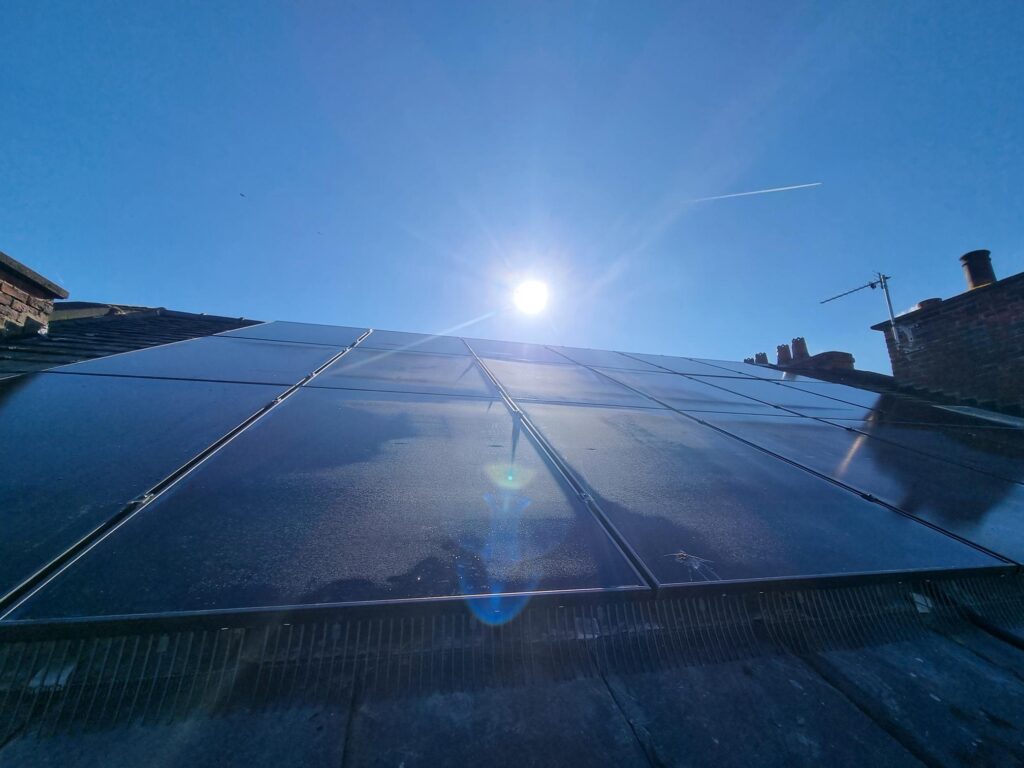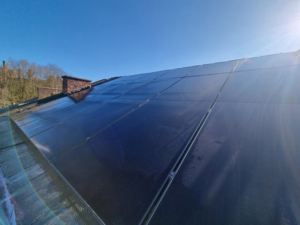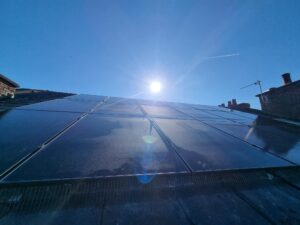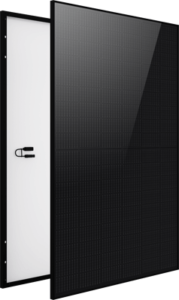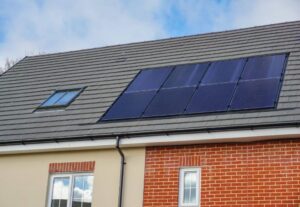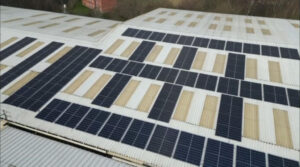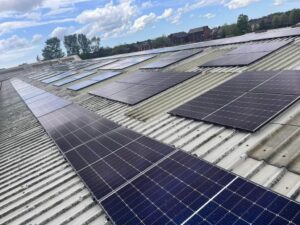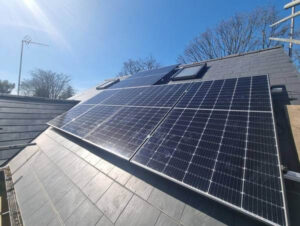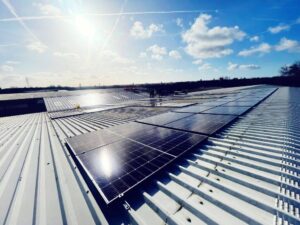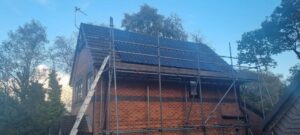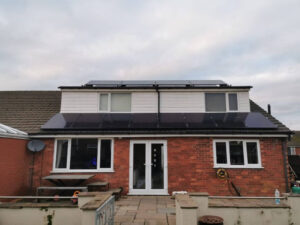In the heart of Preston, nestled among buildings that whisper tales from the 19th century, a revolution has taken place. Where history meets modern efficiency, a remarkable effort has unfolded to bring sustainable energy to a Grade II listed building. Our recent solar installation project on this historic property marks not only an achievement in renewable energy adaptation but also sets a precedent for future conservation and sustainability efforts.

A Modern Solution for an Age-Old Dilemma
This multi-tenancy building, soaking in centuries of history, faced a contemporary challenge: high utility usage and the pressing need to mitigate costs. The answer lay in the abundant and renewable energy of the sun. Solar power presented the perfect avenue to reduce overheads while leaning into a greener future. The installation of 18 all-black Longi solar modules, an 8kW 3PH inverter by Solax, and four state-of-the-art batteries, also from Solax, redefined energy consumption for this historic property.

The Intricacies of Blending the Old with the New
Fitting solar panels onto a building protected for its historical value was no small feat. With restrictions imposed by Preston’s planning authority, our team was guided to install the system on the northwestern roof. Though not the ideal positioning we had hoped for, the unique characteristics of the roof and the efficiency of our chosen technology made it a success. The result? A seamless integration of modern solar technology, respecting and preserving the architectural integrity of the heritage site.

Technical Mastery Meets Efficiency
The project specifics were as follows:
- Installation of 18 Longi modules, each rated at 430W, known for their efficiency and sleek aesthetics – perfectly complementing the historic backdrop.
- An 8kW three-phase inverter by Solax, at the core of converting captured solar energy into usable electricity, ensuring a steady and reliable power output.
- Four 5.8kWh batteries, also from Solax, enabling energy storage when production exceeds consumption – a critical feature for tapping into off-peak tariffs and optimising savings.
- Completion in a single day, a testament to the skill and coordination of our team of electricians and roofers. The entire process, from installation to MCS certification and system handover, was achieved swiftly and efficiently.

The Power of Battery Storage
A standout feature of this installation is the advanced battery storage system, capable of charging during low tariff periods overnight. This not only maximizes the use of sustainably sourced energy but also provides substantial cost savings. The ability to store and use solar power on demand further reduces dependence on the grid, marking a significant step towards self-sufficiency and environmental stewardship.

A Sustainable Legacy
This project exemplifies the perfect marriage between respecting our architectural heritage and ushering in a future where renewable energy sources are pivotal. Although we were bound by the constraints of installing on a less-than-ideal roof orientation, the project still stands as a beacon of what is possible when we approach challenges with innovation and respect for our past.
Beyond the immediate benefits to the tenants and the property owner, this solar installation sends a powerful message: heritage and sustainability can coexist, each enhancing the value of the other. It is a leap toward sustainability that respects the past while building a foundation for a greener future.
In navigating the complexities of integrating modern solar solutions into historic settings, we’re reminded of our responsibility towards both our past and our future. Projects like these illuminate the path forward—a path where sustainability does not come at the cost of heritage.
For homeowners considering a similar leap into solar energy, especially those with properties in sensitive or regulated areas, this project serves as both inspiration and a blueprint for what can be achieved. With careful planning, expert execution, and respect for historical integrity, renewable energy solutions can find a place almost anywhere, turning even the most traditional of buildings into a pillar of modern efficiency and sustainability.


